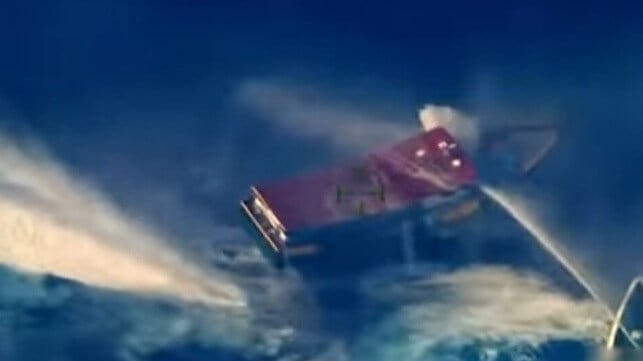China Coast Guard Injures Philippine Crewmembers With Water Cannon

On Saturday morning, a large flotilla of China Coast Guard vessels intercepted and turned back a Philippine supply convoy at Second Thomas Shoal, a reef within the Philippine exclusive economic zone (EEZ). The CCG cutters used water cannons, severely damaging one supply boat and injuring two Philippine Navy personnel. It is the second time that Philippine servicemembers have been injured in standoffs with Chinese forces at the reef.
Beginning at about 0400 hours, CCG cutters and associated maritime militia vessels worked to block a convoy of two PCG cutters and the supply boat Unaizah May 4, said PCG spokesman Cmdr. Jay Tarriela. The CCG "recklessly and dangerously" used water cannon on the Unaizah May, causing significant damage, disabling the vessel and injuring personnel.
The PCG response vessels MRRV 4407 and 4409 pushed through the Chinese blockade to assist the crew of Unaizah May. They provided care for injured crewmembers, and transitioned six passengers and some cargo to a RIB boat to outrun the Chinese interference. On arriving at the entrance to Second Thomas Shoal's lagoon, they found that Chinese forces were attempting to rope off the channel with a floating boom, a tactic seen previously at Scarborough Shoal.
According to the Armed Forces of the Philippines, they made it past and completed the crew rotation mission.
"[These actions] in the waters of the Philippine Exclusive Economic Zone (EEZ) show to the Filipino people, the region, and the world that the PRC recognizes no reasonable or legal restraint nor limitation upon its actions under international law," said Tarriela.
China claims the vast majority of the South China Sea as its own, including Second Thomas Shoal and other features within the Philippines' 200-nautical-mile EEZ line. In 2016, the Permanent Court of Arbitration in the Hague ruled that China's claims were not consistent with international maritime law, and it issued a judgement in favor of the Philippines. Though Beijing is a signatory to the UN Convention on the Law of the Sea, China did not participate in the proceeding and has ignored the outcome; Beijing insists that the Philippines is trespassing within Chinese territory, which is co-located within the internationally-recognized Philippine EEZ.
To defend against Chinese incursion, the Philippines maintains a military outpost aboard a crumbling shipwreck on Second Thomas Shoal. The PCG regularly carries out personnel rotation and resupply missions to keep the outpost going, and Chinese forces regularly attempt to block the convoys. Over the past two years, the China Coast Guard has gradually changed its rules of engagement to allow increasing use of force, to include light contact (shouldering) and water-cannoning the superstructure.
"If the Philippines continues to act unilaterally, China will continue to take resolute measures to safeguard its territorial sovereignty and maritime rights and interests," China's foreign ministry said. "All consequences caused by this shall be borne by the Philippines."
The Philippines' Western allies have issued statements of support in response.
"The succession of repeated dangerous maneuvers, blocking and water-cannoning from Chinese Coast Guard vessels and Maritime Militia against Philippine vessels engaged in resupply missions constituted a dangerous provocation against the Philippines vessels," said the EU's foreign policy agency in a statement.
